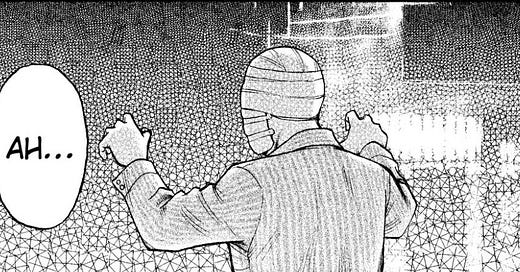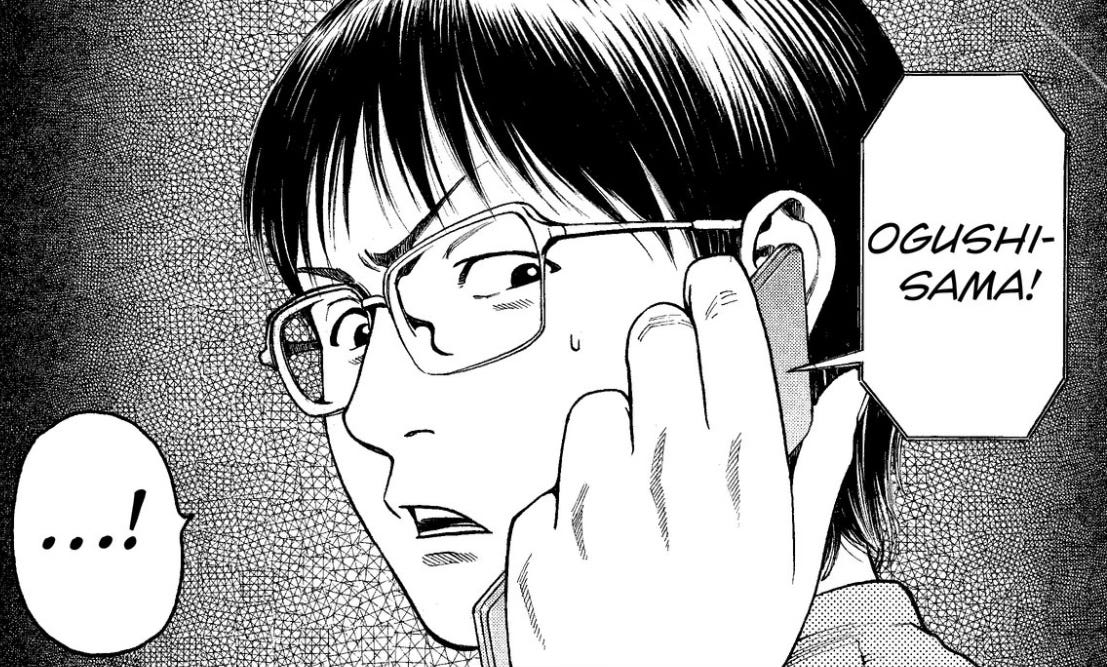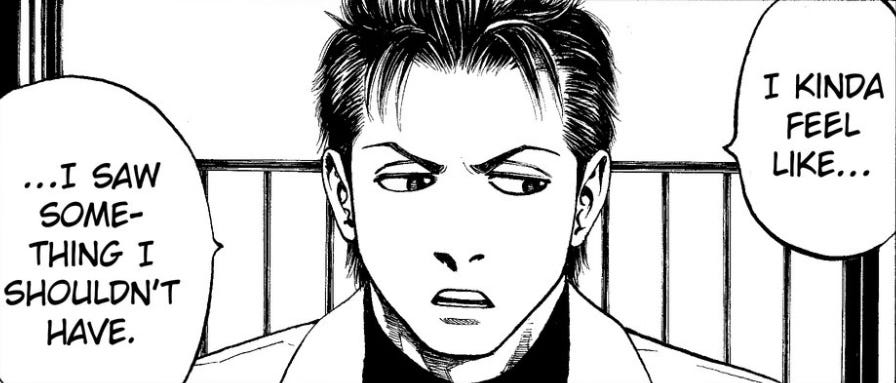Preface!
I’d heard a lot about PTSD Radio before picking it up. The general consensus of what I’d heard was “can’t really explain it, just go for it.” Which, honestly, is a major selling point for me. I like a story that you have to experience in order to understand.
Similarly, if you asked me to explain PTSD Radio to you, I’d say “can’t really explain it, just go for it.”
Thankfully, what I’m here to talk to you about today isn’t necessarily based on any particular story elements within PTSD Radio, because I honestly can’t name a single human character from the series. Instead, what I’m going to focus on is how this story can work so well despite not having many “proper” story elements working for it.
If you read the title—assuming you did—you already know what that thing is that makes it work so well. It’s the way the story is told.
Preface over.
It wasn’t that long ago that I despised the idea of experimenting with story form. Ignorant me, I’d never read a story that did it successfully, so naturally I thought all stories that played with form did so because they didn’t have the chops to tell the story “normally.” Not gonna lie, there were many a time in one class or another, I was given the task of writing the story in a new way—epistolary, journal, etc.—and I just… didn’t do it.
This goes without saying, but let me say it anyway—I was horribly wrong.
After reading some novel-in-verses (especially Me, Moth) and some experimental visual stories (especially The Secret Spiral of Swamp Kid) I decided to give it a go and wouldn’t you know it, it works really well. It’s a rewarding experience that doesn’t hide the fact that you don’t have “proper” story elements, but rather let’s you lean into your best features.
As a voice-y author, I used experimental forms like journals and presentations to let my character’s voice take over the story.
All I’d been missing was an understanding of why stories need to be told specific ways.
Before we get into PTSD Radio, here’s what you need to know:
Uh… well, not much, really. This is a very disjointed story that takes place in a small town with a mysterious deity (Oguchi-sama). The effigy of Oguchi-sama has been tampered with, and ever since, crazy stuff has been happening around town. Monsters everywhere, freaky faces popping up in windows, and lots of sentient, disembodied hair squirming around everywhere.
That’s… yeah… that’s all you need to know.
Honestly, you look at that synopsis, and it doesn’t sound that special, right? A small town with a mysterious deity. I’m reading that premise all day every day, but in terms of innovative? Not so much. And that’s okay, because I’m going to stage my leaping off point around the same quote I used in the Frieren post about tropes—
"Everything has already been done, every story has been told, every scene has been shot. It's our job to do it one better." — Stanley Kubrick.
A small town with a dark history is far from original, but PTSD Radio makes it original in the telling of the story. Gone are the days of a linear, point A to point B fright fest where the core mystery is solved by an intrepid bunch of townsfolk eager to stop anymore freaky things from happening.
Replace that with a disjointed, haphazard collection of stories ranging from a single image to 10+ pages. It is, as the title would suggest, like a radio, searching for the right frequency and stumbling on disturbing things along the way. Almost like in all those paranormal investigation shows when they use a spirit box to talk to otherworldly entities. You just never know what you might hear.
So there we have the experimental form, now how does it benefit the story? Because you can fudge the form of the story all you want, but it has to serve the stories strengths, otherwise why are we even doing it?
By maintaining this radio-esque approach, readers never find a sense of grounding. I feel almost completely lost as to the who’s and what’s and where’s in nearly every little terrifying vignette I read, but that doesn’t make it any less compelling. In fact, I find myself blazing through each little anecdote desperately searching for answers, for grounding, for some semblance of reason.
If the idea behind horror is to frighten your readers, to keep them off guard, PTSD Radio achieves this primarily through an unstable reading experience.
There are quite a few mainstream horror movies that have taken similar approaches. The Blair Witch Project, for instance, uses found footage to make a distinctly not scary story tense and memorable. I actually find that Hell House LLC is a better example—though not as popular—because they use the found footage to build strong characters, the horror is relatively subtle, and yet I still found myself glued to the screen.
Paranormal Activity uses home footage to terrifying effect. So many of the true paranormal encounters out there are captured on CCTV or security footage, so taking that true-to-life lens and applying it to horror is a brilliant step for the genre.
And it doesn’t only work for horror. Think about mockumentaries. The Office worked so well because we got these personal windows into each character as well as their day-to-day. It was all about character, and this form gave us more character than we otherwise would’ve had.
PTSD Radio doesn’t need strong characters. They don’t even need a strong plot. I mean the plot can essentially be summed up with one sentence—a mysterious deity in a small town is messed with, unleashing a string of horrors (many hair-based), and it’s all hands on deck to pacify this deity.
What I find especially endearing about the series, though, is that even in the disjointed approach, just about everything has a purpose, or a reason. The hair, for instance. There is a lot of terrifying hair stuff. Hair-ifying stuff? Forgive me.
There’s a lot of it. But it’s not just arbitrarily about hair for the sake of it just looking creepy. In a flashback story, we see the early days of this deity, Oguchi-sama. A young girl has gotten lost in the woods and in order to find her, her sister ties a strand of hair around Oguchi-sama’s horn as an offering.
Simple. They don’t need to say any more than that. Suddenly the hair-based horror makes sense.
Which has little to do with the way this story is told, other than to say that with purpose and intent, just about anything can work.
Going back to being a voice-y writer. I’m writing this story in the form of a kid giving a presentation at class. The whole reason this became the means of the story is simply because my mentor at the time told me to stop thinking about what a story can and can’t be and just tell it the most natural way it can be told.
For the sake of me leaning so heavily into voice, having the character speak the entire story just makes sense. It makes the voice even stronger because it’s all voice.
I feel like PTSD Radio had a similar approach. How can this story, which is already eerie and haunting in premise alone, unsettle readers even more than the story itself naturally could?
Don’t let them settle in. Don’t let them understand what’s around them. It pads the atmosphere, sure, but more than that, it’s so technically helter-skelter that you cannot settle. Occasionally you’ll get a longer story that establishes more of the background of this town and of Oguchi-sama, but then you go on another jilting journey through freaky faces and hair-ifying (forgive me) horrors.
All in the name of telling the story better.
I also just want to say that while the general theme of this post has been “do it with intent,” it’s not like you can’t also just decide that you want to write a story from the POV of a television or whatever, just for the sake of doing it. Story is exploration. Of course, it would be nice if there ends up being a reason for the story being told that way in the end.
Hey, creatives! This is a really simple exercise, but it’s effective. Pick any story you’ve written or drawn.
If you’re writing prose, change how the story is told. If it’s a conversation, make it be through text or through letters. If it’s an action sequence, write it like the character writing in a journal.
If you’re drawing panels, refocus on the perspective. Not from another person’s perspective, but from an inanimate object in the room, like a TV or a window. What would it look like if the TV could see you?
Hey, fans of PTSD Radio! Is there a scariest moment for you? Or a freakiest face? I’m still debating what mine is, but there’s plenty to choose from.







